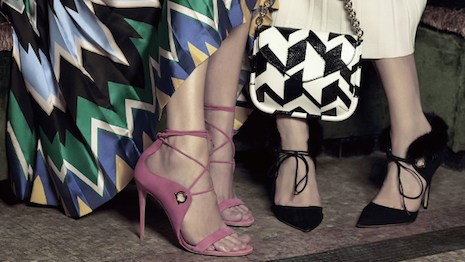NEW YORK – Brands should be selfish about their intellectual property and take an active role in protecting themselves from counterfeits, according to the managing partner of Sedhom Law Group speaking at Luxury FirstLook: Time for Luxury 2.0 on Jan. 18.
Counterfeiters are becoming more sophisticated and consumers today have greater access to fake goods, contributing to a business that is $500 billion and growing. By ignoring the problem, brands are only doing themselves a disservice as their brand is diluted and consumers feel they are buying into a less exclusive label.
“Even if you put law aside for a second, you’re diluting your own brand—you’re ruining your own brand—by not capturing your brand’s identity and then keeping it for yourself and for your consumers,” said Rania Sedhom, managing partner, Sedhom Law Group.
“Those individuals that are going down a dark alley and buying a $200 bag, they are not your consumers,” she said.
“But you should worry about the person sitting in Oklahoma who’s so happy that they just found that secondhand Chanel bag. Because no matter what they do, life gets in the way, they couldn’t spend $4,200 on that 2.55 bag, but they have $2,700. Not too shabby, but extremely expensive for a fake bag. So protect your consumers and protect yourself.”
Luxury Daily produced Luxury FirstLook 2017: Time for Luxury 2.0.
Taking ownership
Intellectual property falls into four categories: trademarks, copyrights, trade secrets and patents.
Counterfeits are no longer confined to a back alley, with fakes popping up in secondhand stores, surplus stores and online marketplaces. The addition of channels that are more trusted has made it more difficult for consumers to discern whether they are getting real or fake merchandise.
Amazon, for instance, keeps all of its inventory in the same warehouse whether legitimate or knockoff. Consumers who receive a fake may leave feedback on the product page, but it reflects on the item rather than the seller.
This distinction is especially challenging when luxury brands are discounted either through their own channels or through wholesale retail, leaving less of a differentiation in price point between real and fake.
Counterfeiters are not only knocking off products, but they are also printing up fake authenticity cards and receipts, sharing stories in an effort to legitimize the products’ origins.
Alibaba’s Jack Ma made the controversial statement that fake luxury goods are as good or better than the real deal. Ms. Sedhom pointed out that not only does this empower the counterfeiters by complimenting their product, but it also condones the activity.
In retaliation, a number of brands questioned Alibaba’s sincerity in its promise to fight fakes, and the marketplace lost its position in the International Anticounterfeiting Coalition. This week, Alibaba linked with Louis Vuitton and a number of other brands on a new data-centric Anti-Counterfeiting Alliance.
EBay has had issues with secondhand fakes, but it is looking to turn it around. The online auctioneer and marketplace is easing consumers’ worries when buying luxury goods through its platform with an upcoming authentication program, in which sellers can opt in to have their products certified by professional authenticators (see story).
Ms. Sedhom said that eBay’s move shows that Alibaba and Amazon could also provide a similar authentication.
Taking steps
There are a number of things brands can do to actively counteract the selling of counterfeits.
These include registering products, sending out cease and desist letters to violators and communicating with consumers.
For instance, Birkenstock pulled all of its products from Amazon and then informed consumers that any merchandise with its brand on the marketplace was fake.
Another option is embedding technology in products.
Moncler began placing RFID chips in its coats. When a phone is waved over the chip, it will verify the authenticity of the product to the consumer.
Italian fashion house Salvatore Ferragamo used RFID chips for another purpose, curbing the distribution of nearly 25,000 knock-off goods from China due to successful anti-counterfeiting measures.
Ferragamo continues to fight against counterfeiting in China and during 2015 blocked 91,000 online advertisements for fake goods with its labels, destroyed 12,500 fakes and confiscated another 12,400 as they were sent out of China. Part of its successful approach to deal with counterfeiting includes recognition in China as a “well-known brand,” allowing Ferragamo to better combat the sale of fakes (see story).
“Luxury brands like to keep everything very positive and beautiful, and there’s nothing beautiful about being inauthentic,” Ms. Sedhom said. “But you still have to communicate. Find a way that you can do it.”
from Jewelry – Luxury Daily https://www.luxurydaily.com/technology-is-an-ally-in-combating-counterfeits/
via Your #1 Source to Finding Luxury & Designer Goods, Handbags & Clothes at or Below Wholesale: Click Here.


No comments:
Post a Comment